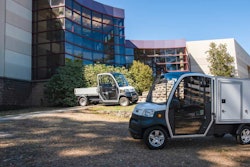
A research team from Wageningen University of the Netherlands has discovered electricity used within the building could be produced from plant-covered roofs within a few years.
Additionally, fields of crops can produce electricity helping individuals decide between growing food or bio-fuels.
“The technology is based on the principle that plants make organic matter through photosynthesis and some of this passes into the soil as waste,” according to the Environmental Research Web. “When micro-organisms in the soil break this organic matter down, they also release electrons and protons. The so-called Plant-Microbial Fuel Cell (Plant-MFC) harnesses electricity with the aid of pairs of inert carbon electrodes. An anode in the soil harvests electrons and these combine with protons and oxygen from the air at the cathode, producing water and generating electricity.”
The photosynthesis process is ideal because it can break down organic matter consistently and also work for waterlogged roots.
By using the Netherlands Institute of Ecology’s flat roof, the team has developed a pilot electricity generating covering.
“This can currently generate 0.4 W of electricity per square metre of plant growth,” the site states. “According to Marjolein Helder, approximately 15 square metres of plant growth on a roof is sufficient to charge a mobile phone.”
However, this is not the end of the line for the research team as they believe it will be possible to generate as much as 3.2 W per square meter of plant growth, which could provide enough electricity for a home.
“Scaling up is one of our big challenges,” Helder says. Plans to improve the power output involve work on the materials for the electrodes, development of their positioning and increasing the number of electrode pairs. “Right now we only use one pair of electrodes per square metre and one pair gives about 1 V,” Helder adds. “To produce electricity efficiently we would need to produce 5 V or 12 V, either by making a series of electrodes or using power converters. We still need to figure this out.”









